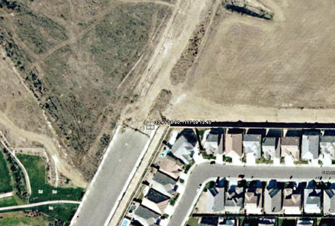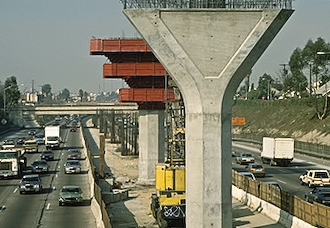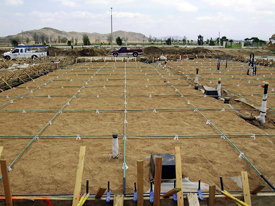

Photography & Imaging for Forensic Studies and Court Exhibits |
 |
Other types of imaging in forensic photography are aerial photography and laser scanning. Aerial photography can be color or black and white. Color is normally used for oblique, non scalable images while black and white is used for high resolution images that can be scaled and used for accurate three dimensional mapping (Photogrammetry). This mapping may be presented in a digital form for use a in a computer drafting program (CAD) or as a hard copy map showing lines of equal elevation (contours) and spot elevations. Laser scanning is a relative new technology and allows for direct field scanning of an object that will produce a very precise and accurate three-dimensional digital image on which accurate measurements can be taken. This technology is very effective for analyzing physical structures such as buildings, bridges, dams, slopes and other man-made features where a failure has or might occur. Fred Henstridge Photography has the equipment, skills, and experience to obtain all forms of forensic imaging. Our basic photography is carried out on an in-house basis. We have access to aerial imaging and laser scanning through our various strategic partners in the engineering, surveying, mapping, and photogrammetry and geospatial industry. As a California, Nevada, Arizona, Oregon and Colorado licensed land surveyor Fred Henstridge has over 45 years of professional experience in obtaining and analyzing these forms of forensic images. We have specialized experience in the fields of transportation, construction, and general civil engineering. |
Aerial photo of new construction site where erosion to an adjoining housing tract was suspected. For a ground view of this site please click here. |
Having an adequate collection of photos and other images in a timely manner will assist the investigators or litigators in selecting the ones that will best assist them in telling the story. These images must be clear, sharp, of a high resolution, diversified, and authenticated. Turn around time can be critical to the investigator or litigator. Fred Henstridge Photography maintains a separate and secure FTP (File Transfer Protocol) site that can be accessed via you Internet browser. This site is password protected and each individual client will have a unique password protected site. We can upload image, slide shows and Power Point files to site from anywhere in the world where we have Internet access. This allows the client to immediate access and viewing of the images and slide shows. We believe this can be a major benefit to our clients. The small additional cost for quality photography will be more than offset by the benefits derived from images that are timely, authenticated and properly labeled.
|
© Fred Henstridge Photography, Menifee, California. All Rights Reserved.


